Mountains And Wines
Do you know wines from Trentino — a region in northern Italy? From the data published in 2019, the vineyard area amounts to 10,211 hectares, all intended for the production of wine grapes.
The Territory of Trentino
The region is characterized by vineyards located at an altitude ranging from 300 to 600 meters above sea level and more precisely:
- 32% of the vineyards are located up to 200 meters above sea level
- 39% of the vineyards are located between 201-350 meters above sea level
- 15% of the vineyards are located between 351-500 meters above sea level
- 14% of the vineyards are located above 500 meters above sea level
Pergola Trentina is the prevailing form of vine growing.
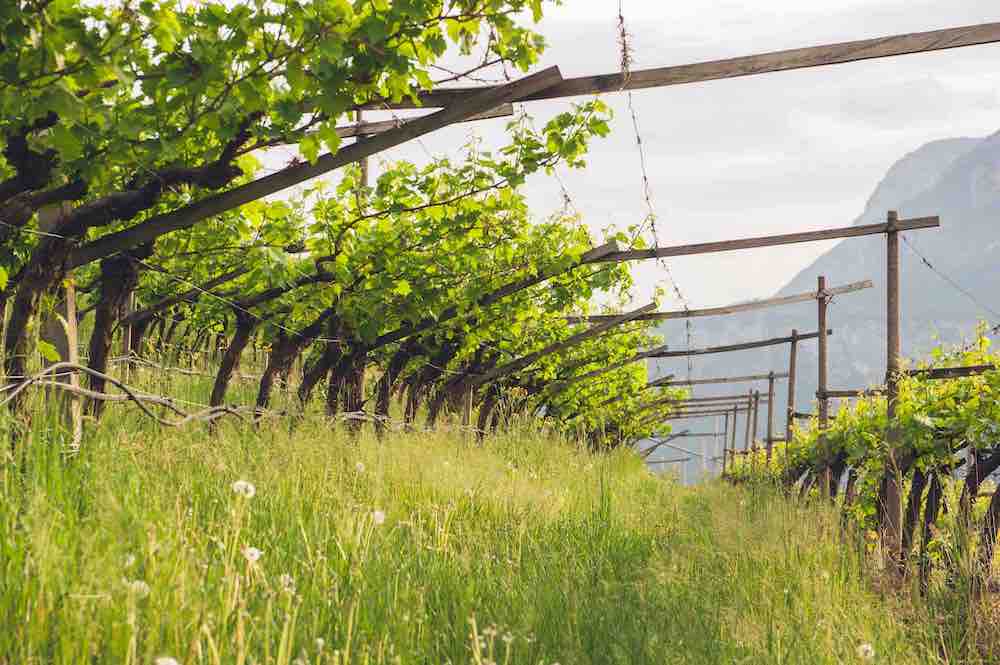
The cultivation methods follow principles of sustainability and low environmental impact. Traditionally, the vineyards are worked by hand. The advantage is not only of the quality of the wines but also of the protection of the landscape.
Trentino is divided into 3 zones:
- Central Trentino – where the Piana Rotaliana and the Vallagarina are located following the course of the river Adige.
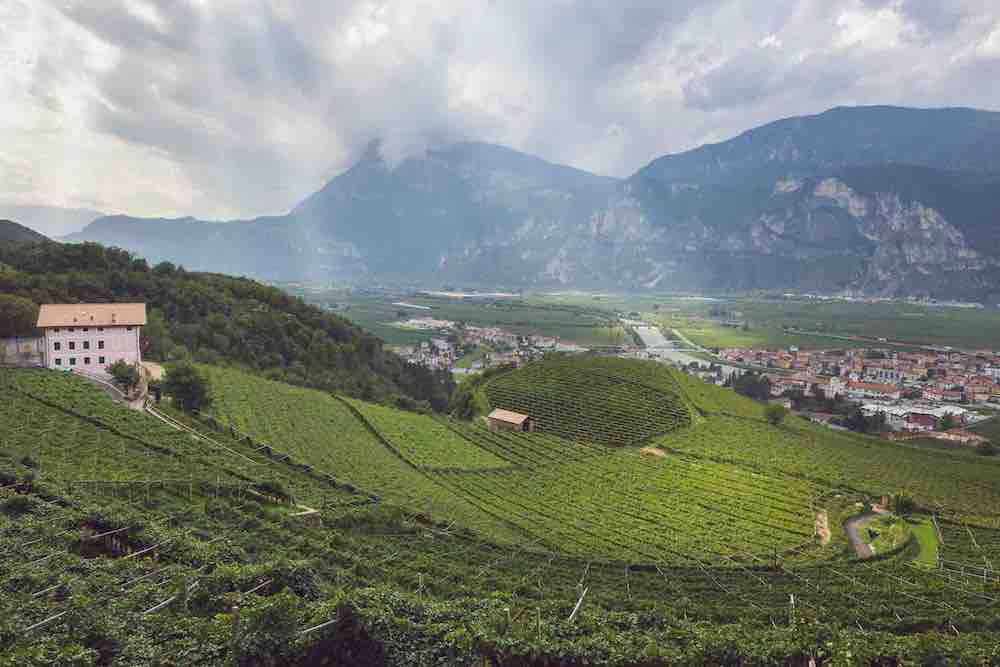
- Western Trentino – where the Valle dei Laghi is located
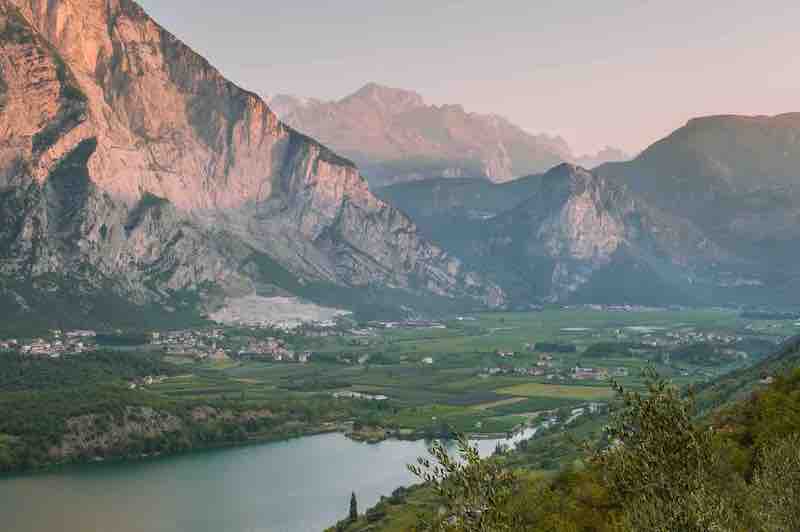
- Eastern Trentino where we find the Valle di Cembra and the Valsugana.
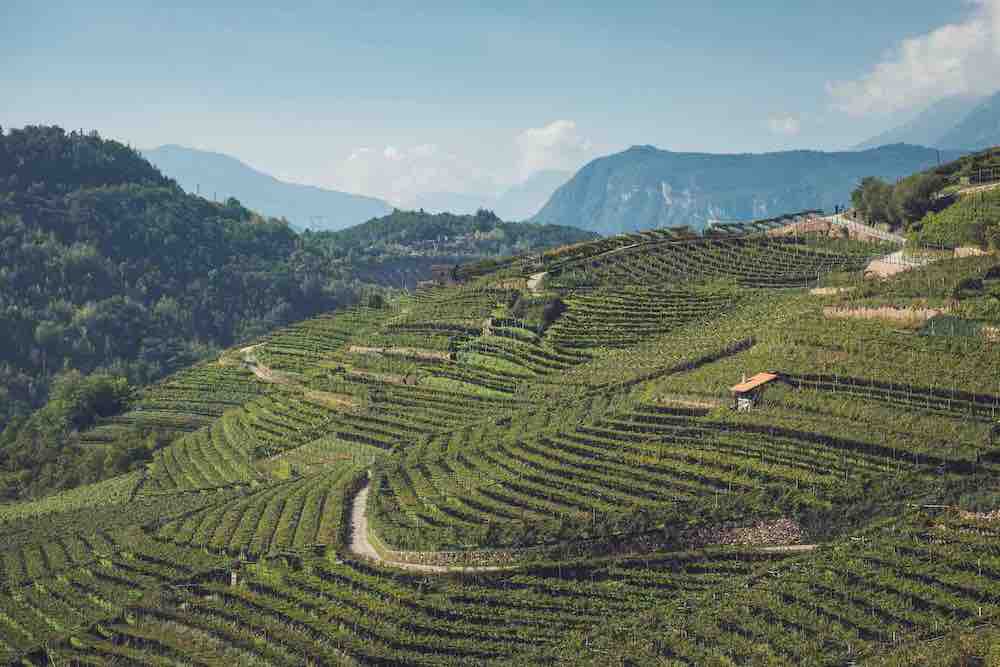
Wine from Trentino
The production of grapes in Trentino Alto Adige focuses on white berried grapes for 76.5% and red berried grapes for 23.5% (data from the 2021 harvest).
The main white berried varieties are: Pinot Grigio, Chardonnay, and Müller Thurgau. The white berried ones are: Teroldego, Merlot, Marzemino, Pinot Noir, Lagrein, and Schiava.
Trentodoc: is a sparkling wine produced with the classic method. It is a sparkling wine known as a “mountain sparkling wine” and known under the Trentodoc brand.
Nosiola: the name comes from “hazelnut”. The scent and sapidity is reminiscent of the wild hazelnut’s. unripe fruit. This wine is the son of the breeze and wind that rises from nearby Lake Garda to the Valle dei Laghi.

This wine amazes me with its great drinkability and immediacy. It has good acidity and, in its sweet version, gives life to one of the finest wines, Vino Santo Trentino.
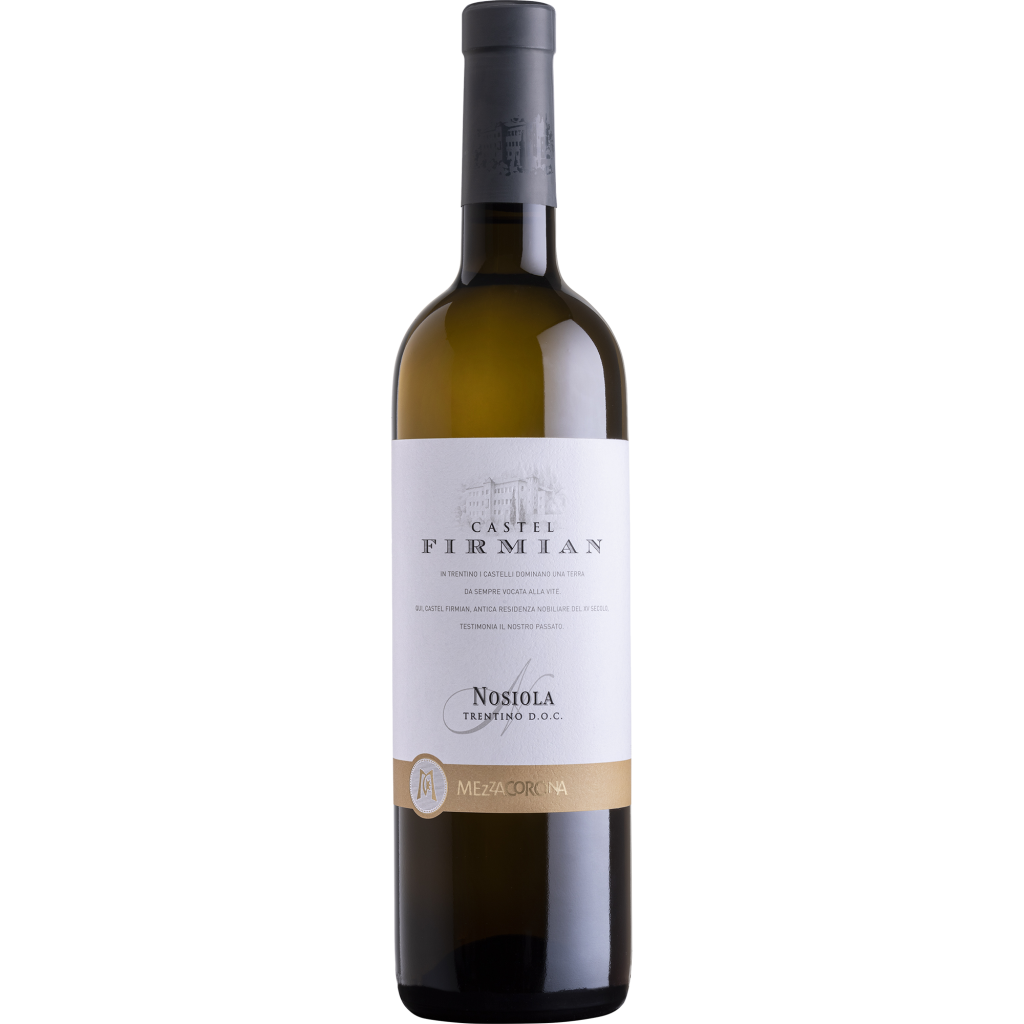
Recommended food pairing: spaghetti with clams.
More Wines
Müller Thurgau: this vine was created by Professor Müller at the end of the 19th century through a cross between Riesling and Sylvaner. In Trentino he found his ideal habitat. By DNA Müller Thurgau is a vine that loves the mountains. Its best at latitudes reach 1000 meters above sea level. Müller Thurgau loves temperature ranges and steep slopes and Cembra Valley is the ideal territory.
Müller Thurgau is a fresh, intriguing, and drinkable wine. Suitable for light meals, perfect in summer and as an aperitif.
Marzemino: a vine with ancient origins and is mentioned in Mozart’s “Don Giovanni”.
The wine is characterized by unmistakable notes of violet, plum and small fruits. The color is deep ruby red. On the palate, it is fragrant and immediate. Marzemino is best in its youth.

Recommended food pairing: Grana Trentino for a dinner based on wine and cheese
Teroldego: its red color attracts and intrigues the eye. Legend compares it to the color of a dragon’s blood — deep purple, among the darkest in the world. Teroldego has unmistakable hints of wild blackberry, blueberry, raspberry, and violet. Mint and balsamic notes make it elegant and enveloping. Finally, the spicy nature emerges with notes of black truffle and leather in the aged versions.
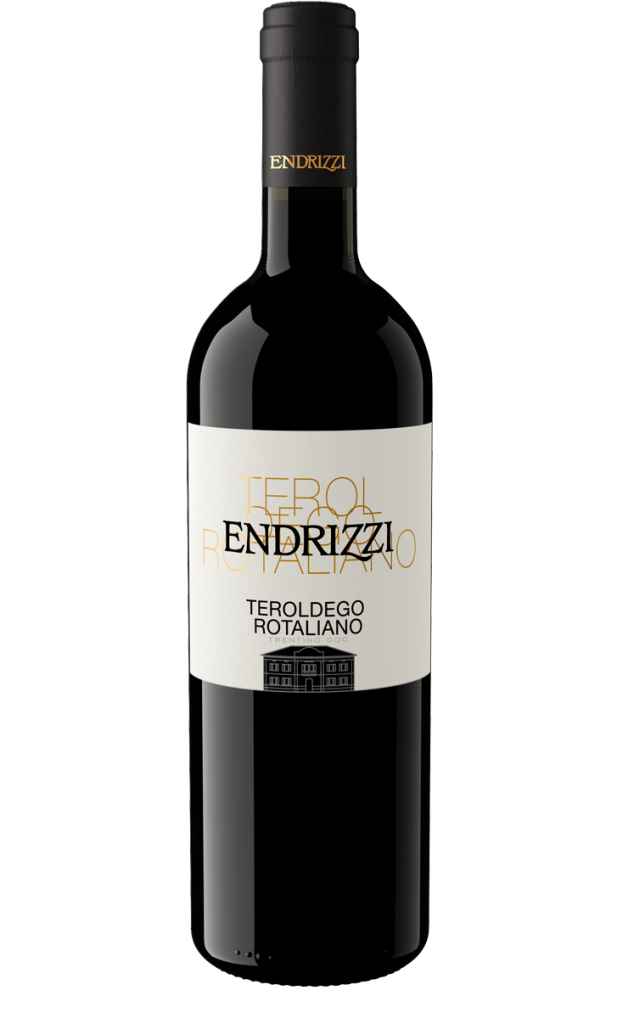
Recommended food pairing: beef stew
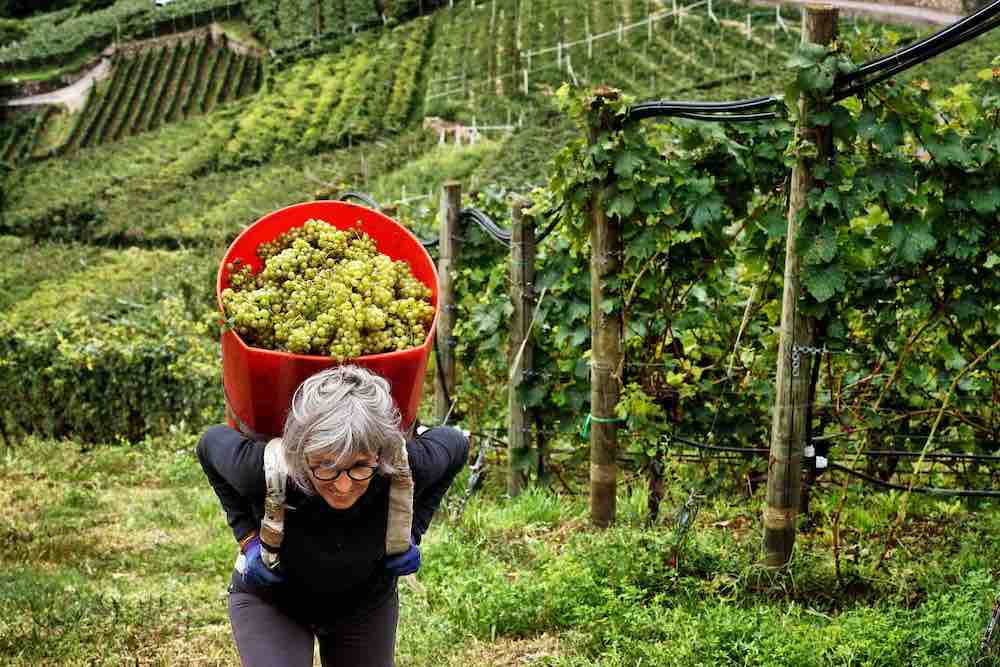
Vino Santo
One of the best known and most prestigious wines is Vino Santo. It is a unique passito of its kind, characterized by a perfect balance between sweetness and acidity.
It is produced in micro quantities. — less than 30,000 bottles of 0.375 ml.
The name “Vino Santo” derives from two events: (1). it was used in the past for religious celebrations and (2) the grapes were pressed during Holy Week.
The bunches are placed on racks called “arèle”. During this period on the racks, the grapes are attacked by noble rot and at the same time there is a large concentration of sugars. After pressing, its refinement can reach 15 years.
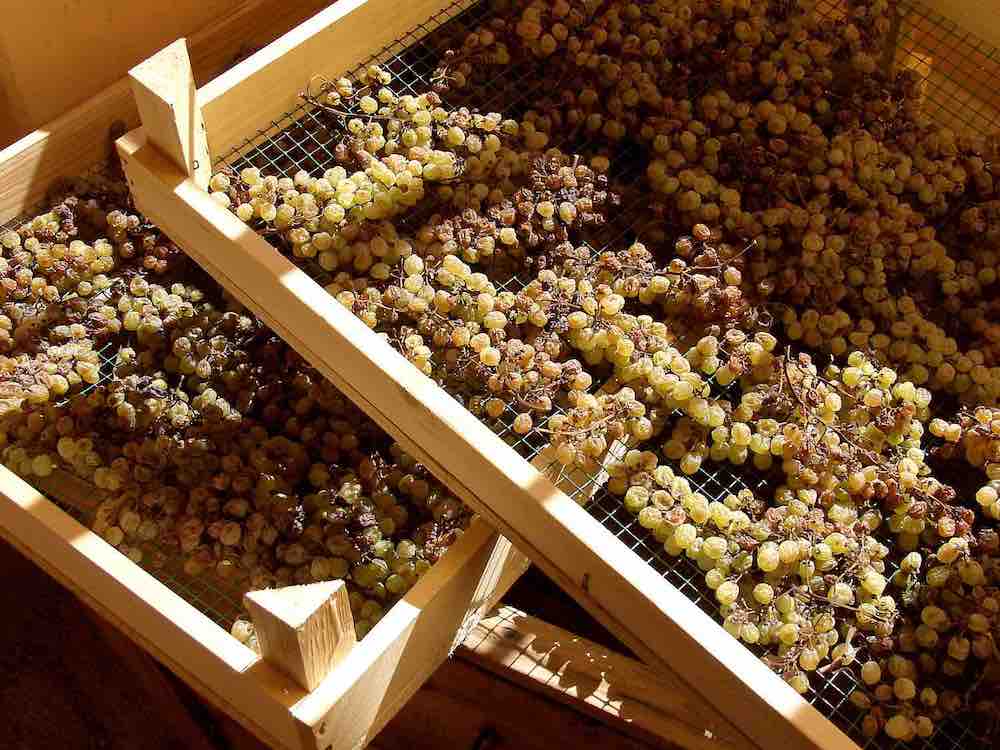
Recommended food pairing: dark chocolate
Wine and food
What pairs best with these wonderful wines? I particularly recommend dumplings, a simple but impressive first course. Also, strudel which is an easy but wonderfully delicious dessert.
“Canederli” and wine
This recipe goes perfectly with a Trentodoc wine. Canederli is a sparkling wine produced using the classic method. Choose a rosé version if possible. Thanks to its acidity, it will degrease your palate very well achieving an excellent gustatory balance.
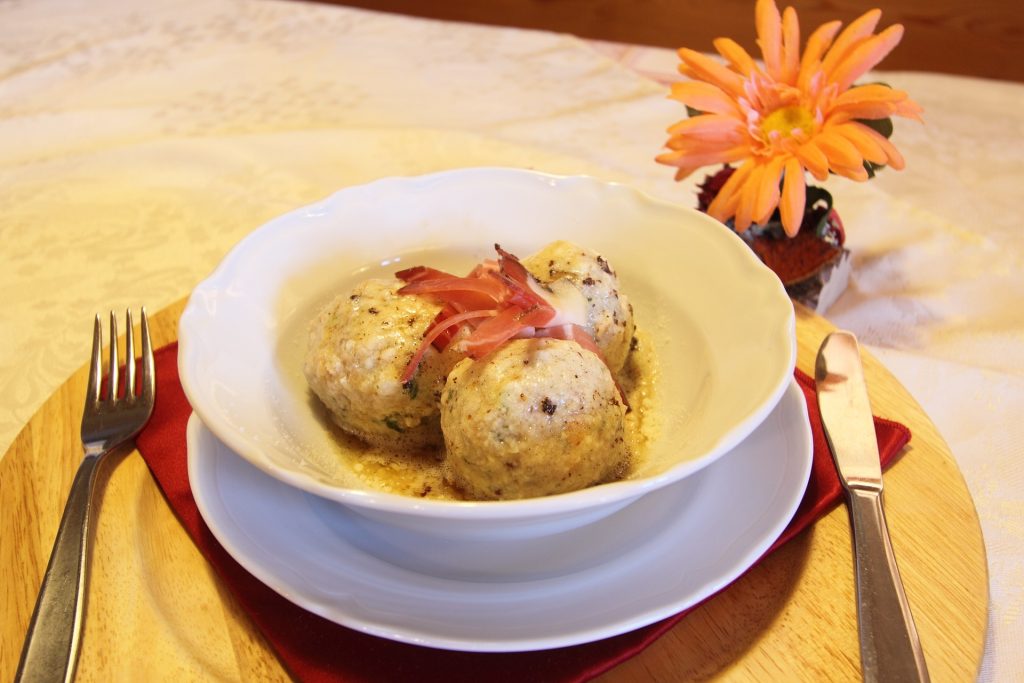
First prepare the broth: a courgetti (zucchini), a potato, a clove of garlic, two carrots, two onions, two tomatoes and three celery sticks. If you like, you can also add a few bay leaves and some peppercorns.
Wash all the vegetables, peel the carrots by removing the two ends, and divide them in half. Peel the onions and cut them in half. Break the celery stalks into three parts and roughly chop the courgettes. Peel the potato, cut it into four pieces, and peel the two tomatoes.
Put three liters of cold water on the fire and add all the vegetables. At the same time add the bay leaf, the black peppercorns, and the unpeeled garlic clove.
Bring to the boil, add the salt, and a little parsley. Close with a lid and leave to cook for about an hour and a half. At the end, add salt and filter the broth through a sieve.
Now let’s move on to the canederli:
Ingredients
- 4 rolls of stale bread
- 2 whole eggs
- 1 sausage
- 1 small slice of speck
- 2 water glasses of milk
- 1 sprig of chopped parsley (or chives)
- 250 g of breadcrumbs
- 100 g of Trentingrana
- salt and pepper
- flour if necessary
Cut the bread into cubes and put it in a bowl soaked in milk. Soak it well using your hands, then add the eggs, diced sausage and speck, cheese, salt and pepper, and finally the parsley.
Mix everything with your hands and let it rest in a covered container for half an hour. Then add the breadcrumbs.
Wet your hands and form the dough into “meatballs” of the same size. Next, cook your dumplings in the prepared broth. Cook in boiling broth for about 15 minutes. Serve in terrines with broth and Trentingrana flakes.



